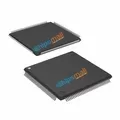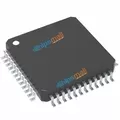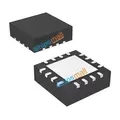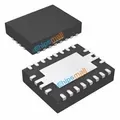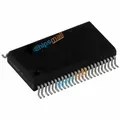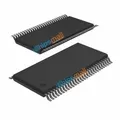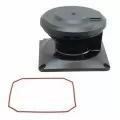OUTLINE:
Buying an Affordable Embedded Microcontroller
 280
280In the field of embedded systems, which is fast and like riding a rocket, it is not easy to choose a microcontroller that is both useful and inexpensive.
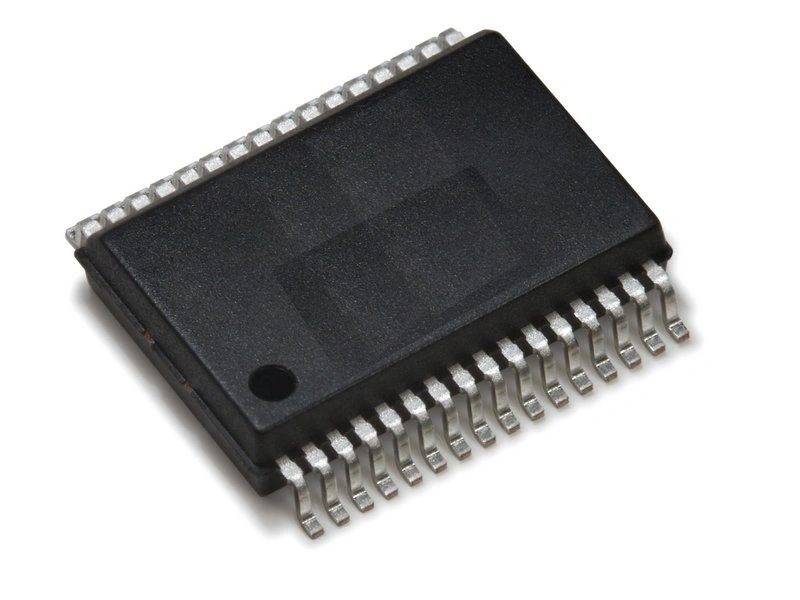
Image Source:iFixit
There are so many options out there that you need to figure out what you want and how much money you have in your pocket.
Whether you're a hobbyist tinkering with your own small projects or an engineer making products for your company, choosing the right one can save you a lot of time and money.
This guide is here to give you a few tips on how to easily find an embedded microcontroller with performance and price parity, and get your money's worth!
An Overview: What Is An Embedded Microcontroller
Embedded microcontrollers are specially designed integrated circuits designed to manage and control various functions in an embedded system.
These gadgets are tailored for specific tasks, acting as "commanders" of various electronic devices and systems.
Unlike general-purpose microprocessors, which can do everything, embedded microcontrollers are particularly powerful in specific applications, are efficient, low-cost, and responsive.
They are small, but powerful, and can work steadily in a variety of environments, whether it is the temperature regulator in the smart home, the engine management system at the heart of the car, or even the automated machines on the industrial production line.
When choosing an embedded microcontroller, you have to think about what it needs to do, how many interfaces it needs, how much power it needs to control, and of course, cost is also a big issue.
There are many brands and models on the market to choose from, each has its own specialty, some run fast, some eat less.
You have to compare according to your own needs, in order to pick the most suitable "small partner".
Once selected, you can start designing your embedded system.
Remember to be careful and patient in the design process, because every little detail can affect the final result. However, as long as you master the way, you will be able to create your own embedded system masterpiece!
Features of An Embedded Microcontroller
Central Processing Unit (CPU)
Core architecture: Embedded microcontrollers have different core architectures, such as 8-bit, 16-bit, and 32-bit. Which architecture you choose determines its processing power and efficiency.
Instruction set: This is the set of commands that the CPU can execute and determines the complexity and power of the microcontroller.
Internal memory
RAM (Random Access Memory) : A place where data and variables are temporarily stored while the program is running.
ROM/ Flash memory: non-volatile memory used to store firmware or program code. Flash memory is particularly popular because it can be reprogrammed.
EEPROM: Electrically erasable programmable read-only memory, used to store configuration Settings that are retained after power failure.
Peripheral
Timers and counters: Used to time operations, generate precise delays, and count events.
Analog-to-digital converter (ADC) : Converts analog signals into digital values so that the microcontroller can interact with analog sensors.
Digital-to-analog Converter (DAC) : In turn, it is useful for converting digital values into analog signals to control analog devices.
Pulse width modulation (PWM) : Generates pulses of variable width to control motors, leds, and other devices.
Communication interface
UART (Universal Asynchronous Transceiver and Transmitter) : Serial communication interface used to connect to other devices.
I2C (Integrated Circuit Bus) : two-wire interface used to communicate with peripheral devices such as sensors and memory chips.
SPI (Serial Peripheral Interface) : high-speed interface used to communicate with peripheral devices such as display and memory.
Input/output (I/O) ports
General Input Output (GPIO) pins: These pins can be configured as digital inputs or outputs to connect buttons, leds, and other peripherals.
Electricity management
Power saving mode: Multiple modes to reduce power consumption, which is especially important for battery-powered devices.
Voltage regulator: An internal or external regulator that ensures that the microcontroller operates within a specific voltage range.
Interrupt function
Interrupt handling: A mechanism that temporarily pauses the main program to process high-priority tasks, allowing the microcontroller to respond quickly to real-time events.
Clock system
Internal and external oscillators: Generate clock signals that drive the operation of the microcontroller and affect speed and time accuracy.
Watchdog timer: A security mechanism that resets the microcontroller if the program gets stuck.
Debugging and programming support
Debugging interface: Ports such as JTAG and SWD (Serial Line debugging) are used to connect debugging tools to analyze and solve microcontroller operating problems.
Bootloaders: Built-in programs that allow you to update firmware without the need for specialized programming devices.
Working Principles
Embedded microcontrollers are like small experts in embedded systems, specializing in doing all kinds of work. How do they work? Let's talk about:
Start-up preparation
Once plugged in, the microcontroller gets busy:
Do a "restart Dafa" first to make sure you start from scratch and are clean. This can be automatically restarted as soon as the power is plugged in, or it can be the press of a small button, or it can be a command in the software.
Then, a "clock steward" would have to manage the time and let the microcontroller know when to do what.
Finally, it is necessary to set up the "small tools" (such as timers and communication interfaces) inside, so that they know how to work.
Work trilogy
Microcontroller work has a routine, that is, "take - think - do" :
"Taking" an instruction first is like copying a topic from a book.
Then "think" about what the command is going to do, whether it's counting or moving things, or talking to peripherals.
Finally, "do", execute the instructions, and complete the task.
Emergency response
Sometimes, there is an emergency outside or inside, and the microcontroller has to drop what it is doing immediately. This is the "break" :
For example, when the timer reaches the point, the pin receives a signal, or the communication interface has a message, it will trigger an interrupt.
The microcontroller has an "interrupt notebook" that records the address of the "emergency handler" (ISR) for each interrupt.
When there is an interruption, the microcontroller goes to the "emergency handler" and asks him to deal with it. When you're done, you can go back to what you were doing.
Dealing with peripherals
The microcontroller also has to chat with "little friends" on the outside (such as sensors and actuators) and "small tools" on the inside to complete tasks together:
Send and receive a signal through the pin, just like making a phone call.
It can also "talk on the phone" with other devices through communication interfaces to exchange information.
In this way, the microcontroller can work closely with the entire system to complete a variety of complex tasks.
Types of Microcontrollers
Microcontrollers are like little friends with different specialties, and they can be classified according to the architecture, data width, and application field. Knowing these types will help you find the perfect partner for your project! Let's take a look at the main microcontroller types:
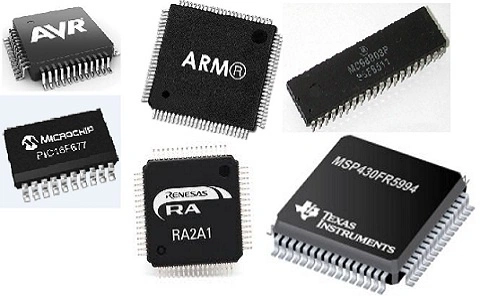
Image Source:EIproCus.com
By data width
8-bit microcontroller: Processing 8 bits of data each time, simple, cheap, power saving, suitable for basic control and small toys, home appliances. Examples include Microchip's PIC16 series and Atmel's AVR series.
16-bit microcontroller: it can process 16 bits of data at a time, the performance is better than 8 bits, the price is moderate, and it is suitable for medium-difficult tasks such as automotive systems and industrial control. Examples include Texas Instruments' MSP430 series and Microchip's dsPIC30 series.
32-bit microcontroller: advanced player, processing 32 bits of data at a time, super performance, large memory, can handle complex tasks. Suitable for iot devices, robots, advanced consumer electronics, etc. For example, ARM Cortex-M series, NXP LPC series, STM32 series.
By structure
Harvard architecture: program and data are stored separately, find instructions and data are fast, performance bar. Suitable for applications requiring high-speed data processing. Such as AVR, PIC microcontroller.
Von Neumann (Princeton) architecture: Programs and data are stored together, simple design, low cost. Suitable for general applications where speed is not a primary concern. Examples include ARM Cortex-M microcontrollers and Intel 8051 series.
By application field
Universal microcontrollers: These small partners are especially versatile and can do everything from consumer electronics to smart homes to industrial controls. They have the advantage of being flexible and having more development tools and resources. For example, Arduino-compatible microcontrollers, STM32 series are of this type.
Specialized microcontrollers: These are tailored for specific tasks, such as automotive systems, medical devices, communications systems. They feature performance optimized for specific tasks. Examples include Infineon's Tricore family of automotive microcontrollers and TI's MSP430 medical-grade microcontroller.
By power consumption
Low-power microcontrollers: These small partners are particularly power-efficient and are suitable for devices that require long running or battery power, such as iot devices, portable devices and sensors. Microchip's eXtreme Low Power (XLP) series and TI's MSP430 series are examples of low power consumption.
High-performance microcontrollers: These are computantly powerful, fast players suited for complex tasks such as real-time data processing, multimedia devices, and advanced robotics. ARM's Cortex-A series and NXP's i.MX series are examples.
By communication interface
Microcontrollers with built-in communication modules: These small partners come with communication modules such as Wi-Fi, Bluetooth or Ethernet, which are simple to design and do not require many external components. Suitable for wireless communication devices, smart home systems and networked devices. Examples include Espressif's ESP8266 and ESP32 series, and Microchip's PIC32 series with Ethernet.
Microcontrollers without communication modules: These are basic models that require external components to communicate. But if your project does not require communication, they are a cost-effective choice. Suitable for those basic control applications.
Tips on Selecting An Appropriate Embedded Microcontroller[Before Buying]
The choice of an embedded microcontroller is critical to a project as it determines performance, efficiency and cost effectiveness. Here are some practical tips to help you navigate the selection process:
Define application requirements
Task complexity: Think about how much complexity your microcontroller has to do. An 8-bit microcontroller may be sufficient for a simple control task, and a 16-bit or 32-bit microcontroller may be required for a complex task.
Performance requirements: Assess the processing power, speed, and real-time responsiveness required. For example, applications that require fast processing and real-time response are better suited with high-performance 32-bit microcontrollers.
Consider memory requirements
Program memory (Flash/ROM) : Make sure you have enough memory to store your application code. The more complex the program, the more memory it requires.
Data memory (RAM) : The runtime must have enough RAM to handle data storage and operations. Choose the appropriate RAM size based on the data processing needs of your application.
Non-volatile memory (EEPROM) : If an application needs to store data that needs to be retained after a setup or power failure, then the capacity of the EEPROM must be considered.
Evaluate peripherals and interfaces
Analog and digital I/O: Count how many input/output pins your sensors, actuators, and other peripherals need, and what type they are.
Communication protocols: Determine which communication interfaces your application needs (such as UART, I2C, SPI, CAN) and select a microcontroller that supports these interfaces.
Timers and PWM: Look at your timing and control needs and make sure the microcontroller has enough timers and PWM channels.
Dedicated peripherals: Some applications may require specific peripherals, such as ADCs (analog-to-digital converters), Dacs (digital-to-analog converters), or motor control interfaces. Make sure the microcontroller has these features.
Power consumption of concern
Low power mode: If your application is battery powered or needs to save energy, look for a microcontroller that supports low power mode. See if they can reduce power consumption while on standby, or switch to low-power mode when they don't need to run at full speed.
Where to Buy An Affordable Embedded Microcontroller [Platforms Recommended]
Here comes an example of embedded microcontroller–MSP430FR2422IRHLT
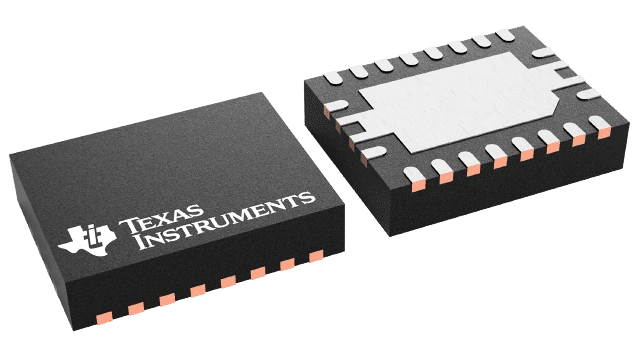
Image Source:Texas Instrument
Brief Introduction:
The MSP430FR 2422 IRHLT is a microcontroller from Texas Instruments, part of the MSP430 family known for its ultra-low power consumption and high performance. This microcontroller is designed for applications that require low energy consumption and efficient performance, making it ideal for battery-powered devices, sensor nodes, and various other embedded applications.
Here is the format you can take reference:
| Platform | Unit Price | Quantity Available | Advantage | Review |
| Chipsmall | 1 US $2.62 | 71498 | Ultra-Low Power Consumption | 4.7 |
| Mouser Electronics | 1 US $1.63 | 281 | Fast and Flexible Memory | 4.5 |
| Digikey | 1 US $1.63 | 1250 | Compatibility | 4.6 |
Embedded Microcontroller VS. PLC Microcontroller
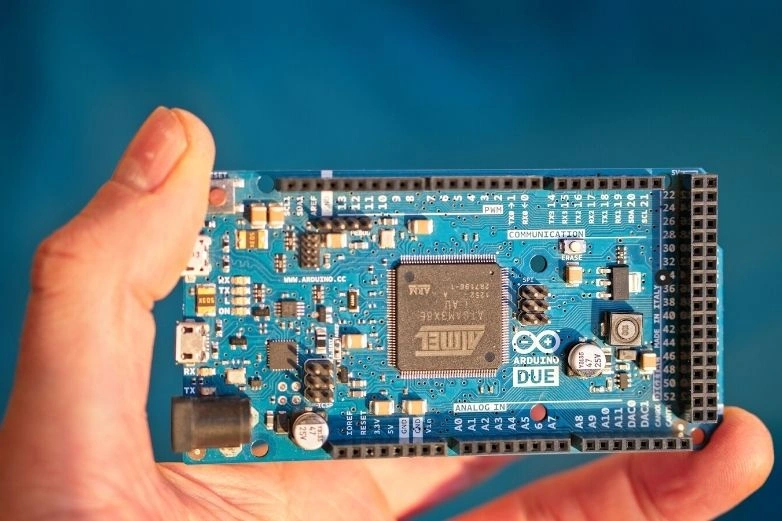
Image Source: Process Solutions
Embedded microcontrollers and Programmable Logic controllers (PLC) Microcontrollers are both important in automation and control systems, but they each have their own uses and distinctive features:
Embedded microcontrollers
Purpose:
Designed for specific tasks in large systems. It is commonly used in consumer electronics, automotive systems, medical devices, and industrial equipment.
Programming:
Generally written in C, C++ or assembly language. Program with an integrated development environment (IDE) that is compatible with the microcontroller manufacturer.
Operating environment:
It works within a specific product or device and is responsible for specific functions such as monitoring sensors, controlling motors, or interacting with other hardware components.
Flexibility:
Super flexible and personalized. Developers can control the hardware and software to make it perform optimistically at specific tasks.
Hardware:
Comes with timer, communication port (UART, SPI, I2C), analog-to-digital converter (ADC), digital-to-analog converter (DAC) and other peripherals. Often integrated on a printed circuit board (PCB) as part of a larger system.
PLC microcontroller
Purpose:
Designed for industrial automation and control. It is commonly used in industrial situations such as production processes, assembly lines, etc., where reliability and ease of maintenance are particularly valued.
Programming:
Programming is usually done using ladder diagrams, function block diagrams (FBD), structured text (ST), instruction tables (IL), or sequential function diagrams (SFC). It is programmed with special software provided by a PLC manufacturer.
Operating environment:
Designed to work in industrial environments, it is robust and can withstand harsh conditions such as extreme temperature, humidity and electrical noise.
Flexibility:
Compared with embedded systems, it is more standardized and modular. It is often equipped with easily replaceable input/output (I/O) modules and communication interfaces.
Is Arduino An Embedded Microcontroller
Arduino is an embedded microcontroller, which is basically a development platform. The platform included an Atmel (now Microchip) AVR microcontroller. It is especially suitable for building embedded systems and all kinds of small projects. Arduino boards are particularly popular, and are often used for prototyping and educational experiments, such as smart homes, robotics, and interactive art installations.
Final Verdict
When buying an embedded microcontroller, the price should be right, but it is more important to figure out what your project needs, such as processing power and peripherals.
Pick a good brand and make sure it works with your existing systems and tools.
It is best to choose a microcontroller with strong community support and full documentation.
Then calculate the power needs, compare the prices of different suppliers, see if you can find the most cost-effective.
Take all this into consideration, and you can find a microcontroller that meets the technical requirements without breaking the budget.

Disclaimer: The views and opinions expressed by individual authors or forum participants on this website do not represent the views and opinions of Chipsmall, nor do they represent Chipsmall's official policy.

share this blog to:


